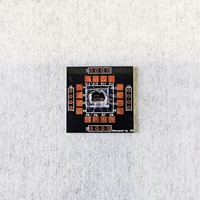Advertisement
Grab your lab coat. Let's get started
Welcome!
Welcome!
Create an account below to get 6 C&EN articles per month, receive newsletters and more - all free.
It seems this is your first time logging in online. Please enter the following information to continue.
As an ACS member you automatically get access to this site. All we need is few more details to create your reading experience.
Not you? Sign in with a different account.
Not you? Sign in with a different account.
ERROR 1
ERROR 1
ERROR 2
ERROR 2
ERROR 2
ERROR 2
ERROR 2
Password and Confirm password must match.
If you have an ACS member number, please enter it here so we can link this account to your membership. (optional)
ERROR 2
ACS values your privacy. By submitting your information, you are gaining access to C&EN and subscribing to our weekly newsletter. We use the information you provide to make your reading experience better, and we will never sell your data to third party members.
Infectious disease
Blood test monitors long-term adherence to HIV medications
Glowing viral DNA tracker is a step toward low-cost lab tests for gauging compliance
by Jyoti Madhusoodanan, special to C&EN
May 14, 2020

A pill taken once a day can keep HIV-positive individuals healthy and protect those who are at risk of infection. But failing to follow these regimens, known as antiretroviral therapy (ART) or pre-exposure prophylaxis (PrEP) respectively, contributes to the development of resistance to the medicine or leads to further community spread of HIV. Previously clinicians had no easy ways to monitor whether an individual had been taking their pills regularly. Now, researchers have developed a blood test that targets a long-lasting drug metabolite present in blood cells. The test is a first step toward a low-cost, point-of-care lab test that could reveal whether a person took their pills consistently over the previous several weeks (ACS Sensors 2020, DOI: 10.1021/acssensors.9b02198).
Common to many drug cocktails used for ART and PrEP is tenofovir, a drug that blocks HIV’s version of the enzyme that converts the virus’s RNA to DNA inside red blood cells; the drug’s action prevents the virus from replicating. But around 30% of those using tenofovir for ART—and an even larger proportion of PrEP users—don’t take the medication consistently enough to block viral replication and ensure protection, whether because of poor access to healthcare or the drug’s side effects. Lab tests to measure ART success in HIV-positive people rely on measuring the levels of virus directly. For PrEP, the only tests available are expensive blood and urine assays that measure tenofovir levels using mass spectrometry. Tenofovir also only lasts a few days in blood or urine. “So, if someone took the medications the night before, you wouldn’t be able to distinguish them from someone who had been taking them effectively for the last month,” says bioengineer Ayokunle Olanrewaju, a postdoctoral researcher at the University of Washington, Seattle who authored the study.
To simplify measuring compliance with both ART and PrEP, Olanrewaju and his colleagues instead looked to the active, long-term form of the drug, a phosphorylated version of tenofovir that lasts several weeks in blood. Using blood samples spiked with tenofovir disphosphate, they added viral genetic templates and a fluorescent dye that bound to newly formed viral DNA. When the drug was present, it blocked DNA formation and the dye did not bind, producing a low fluorescence signal. If the drug was absent—as it would be in someone who hadn’t taken regular doses—the dye bound to newly formed viral DNA and yielded a strong signal. The assay worked over the range of drug concentrations typically found in blood, but has yet to be tested with real-world clinical samples, says chemical engineer Jonathan D. Posner of the University of Washington, senior author on the study.
The test is “a really creative way of measuring the tenofovir diphosphate indirectly” to assess long-term adherence to the medication, says infectious diseases researcher Helen Koenig of the University of Pennsylvania, who developed a PrEP-compliance urine test but was not involved with this study.
The test only takes 30 min and does not require mass spectrometers or other specialized equipment. This short turnaround time and easy processing is “really appealing,” says HIV researcher Jose R. Castillo-Mancilla of the University of Colorado Anschutz Medical Campus, who was not involved with the study. “If they can move this to a point of care test that can be used in the clinic in real time it would be a game changer.”




Join the conversation
Contact the reporter
Submit a Letter to the Editor for publication
Engage with us on Twitter